Colonizing Mars has been a science fiction dream for over a century. Over time, though, science fiction sometimes becomes science fact. NASA is already making plans for a permanent base on the Moon. This could be the first step toward a Mars colony. For humans to live there permanently, however, the planet will have to be terraformed: made more Earth-like. This won’t be all done with machinery and engineering. Instead, hardy plants and animals will remove carbon from the atmosphere, release oxygen, and add organic matter to the soil. It may take centuries, but eventually, something approximating our Earth could be the result. So what might be the first species humans bring to Mars?
Eating Your Greens on the Red Planet
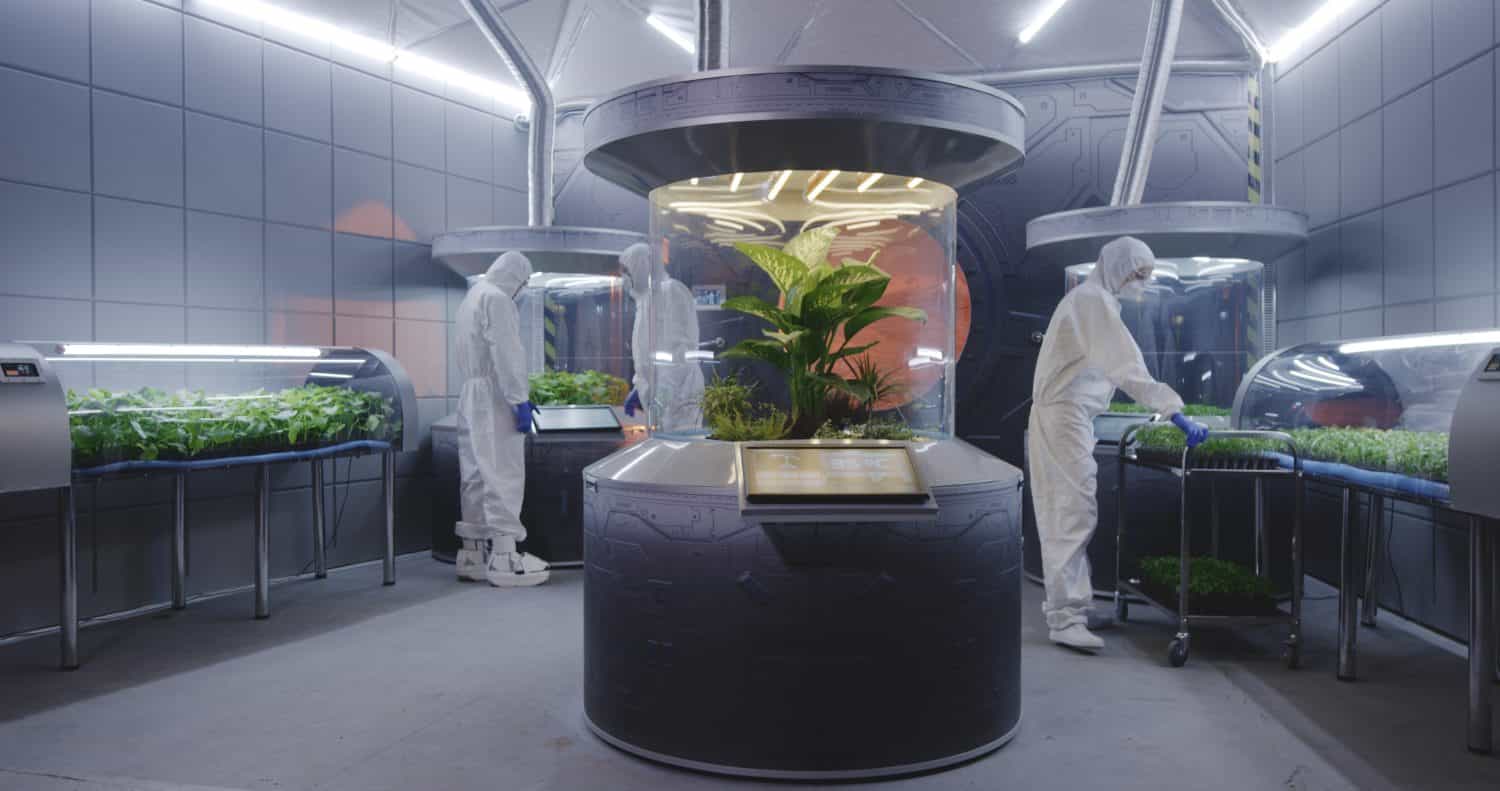
Mars colonists will have to raise their vegetables in greenhouses in the initial stage of settlement.
©Frame Stock Footage/Shutterstock.com
Growing plants on Mars will be difficult. The sunlight there is only 44% of the intensity we receive on Earth. The soil is bone-dry, lacks organic material, and has twice as much iron as Earth soil. Plus, it’s laced with poisonous perchlorates: chemicals that are used in explosives on Earth. This means Mars colonists will grow their food in greenhouses with soil augmented with chemical fertilizers and compost wastes.
Experiments have shown that Mars-like soil could grow most vegetables. The ones that do especially well in Martian conditions are onions, sweet potatoes, carrots, garlic, dandelions, hops, and basil. Peas and spinach did not do well because of the high temperature in the greenhouse. Russett potatoes grew well only when the soil was substantially supplemented with materials to aerate it. And the taste was the same as you’d find in your local produce aisle.
The First Martian Forage Crop
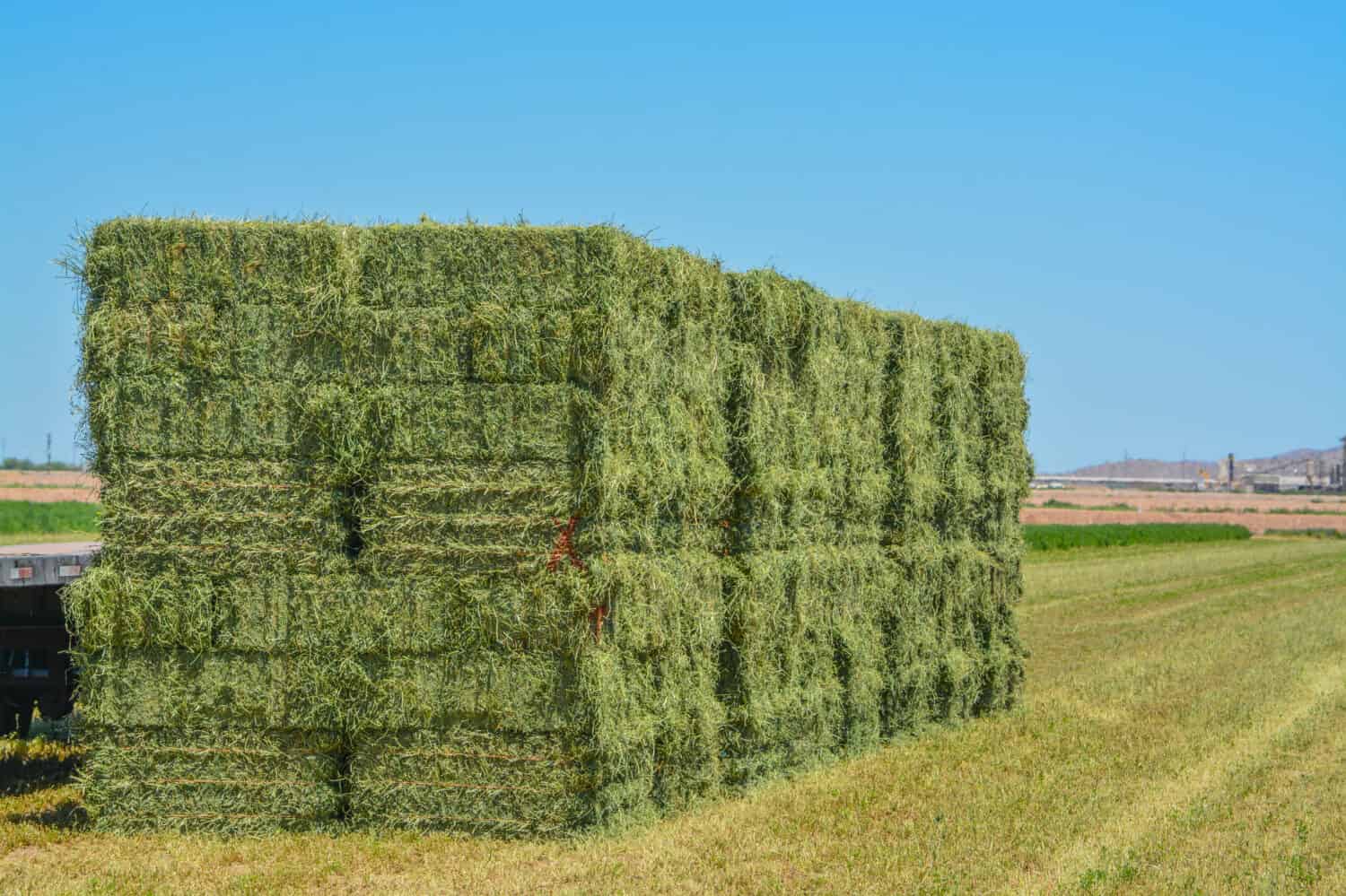
Earth farmers raise alfalfa as a nutritious animal feed.
©Norm Lane/Shutterstock.com
A 2022 NASA study found that alfalfa is a forage crop that could grow in Martian soil. People don’t eat it, but it’s a nutritious staple for cattle, chickens, sheep, rabbits, guinea pigs, and turkeys. Wild herbivores would also thrive on it. It can also be used as an organic supplement to Martian soil to make it easier to grow other vegetables.
Martian Meat

Rather than raising live animals on Mars, colonists are more likely to use 3D printing technology to create meat fillets from lab-cultured organic cells.
©Dmytro Zinkevych/Shutterstock.com
The colonists will need a protein source, but livestock are resource-intensive. Current technology already allows for “printing” meat fillets made from lab-cultured meat cells. In the future, this will likely become a sustainable food source for people on Earth and in space.
People will always want some variety and a more natural diet, at least on occasion. So it is still possible some livestock might be raised for milk, eggs, or meat. Such animals could also serve as prey animals for future Martian wilderness ecosystems with higher carnivores. Smaller animals like guinea pigs, rabbits, and chickens would require the least resources and multiply rapidly. Unconventional choices might be alpaca, which are adapted to mountain highlands, and nutria, which are hardier and larger than rabbits.
A Cold, Cruel World

Lichens can survive in the frigid, arid conditions of Antarctica. They might also be able to do so on Mars.
©Jason Hollinger (original photograph), Papa Lima Whiskey (derivative edit) / CC BY-SA 3.0 - License
Earth’s atmosphere is 78.1% nitrogen and 20.9% oxygen. On Mars, it is only 1.9% nitrogen and 96% carbon dioxide. One way to shift that balance is to cover the planet with hardy plants that, through photosynthesis, will convert sunlight, water, and carbon dioxide into oxygen and energy. These will have to be plants that can survive low light conditions as well as temperature extremes, which on Mars range from an astounding -229 °F to 68 °F (-145 °C to 20 °C).
The only place on Earth that gets anywhere nearly as cold as Mars is Antarctica, where the coldest temperature ever recorded on Earth was -128.6 °F (-89.2 °C). Species that survive there might also survive on Mars, perhaps with some tweaks of genetic engineering. Examples include lichens, fungi, and bacteria. Cyanobacterium chroococcidiopsis is a species scientists think holds particular promise for terraforming Mars.
Space Water Bears
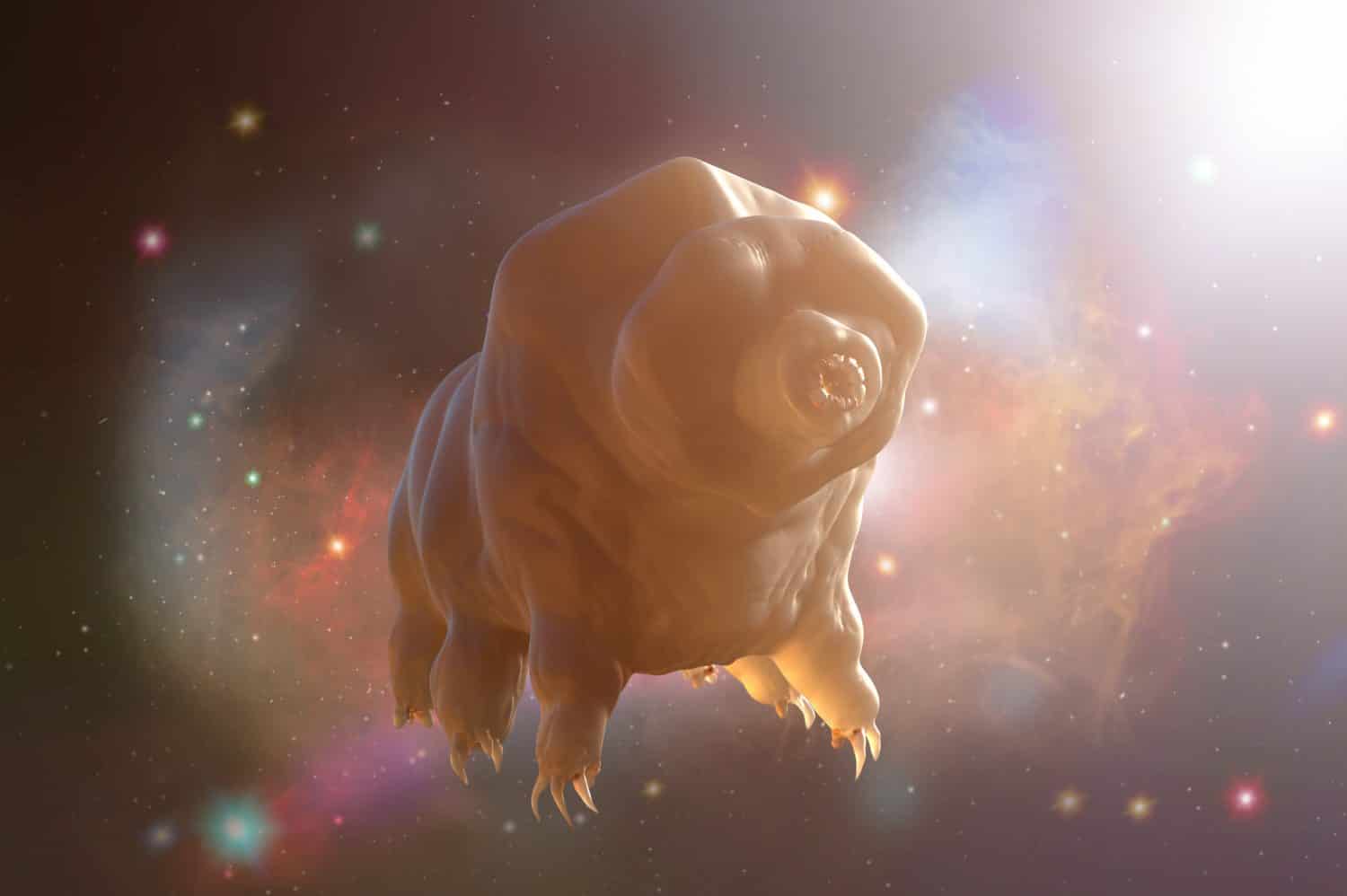
This 3D render of a tardigrade suggests the hardiness of these “water bears” to survive even the vacuum of space.
©Denis---S/Shutterstock.com
Tardigrades or “water bears” as they are commonly known are tiny 8-legged microscopic animals. They can survive in every biosphere on Earth, including high mountains, on the seabed, in jungles, and the polar ice caps. They’re tolerant of dehydration, starvation, airlessness, and extremes of pressure and radiation. Not only have they survived all the known mass extinction events on Earth since the Cretaceous, but orbital experiments show they can even survive when exposed to the vacuum of outer space. And as for those record-breaking cold temperatures of -229 °F (-145 °C) on Mars? Tardigrades will still be chillin’ and doing their thing all the way down to -460 °F (-273 °C)! If any animal gets sent to Mars, you can place money on water bears being among the first.
New Life for New Oceans
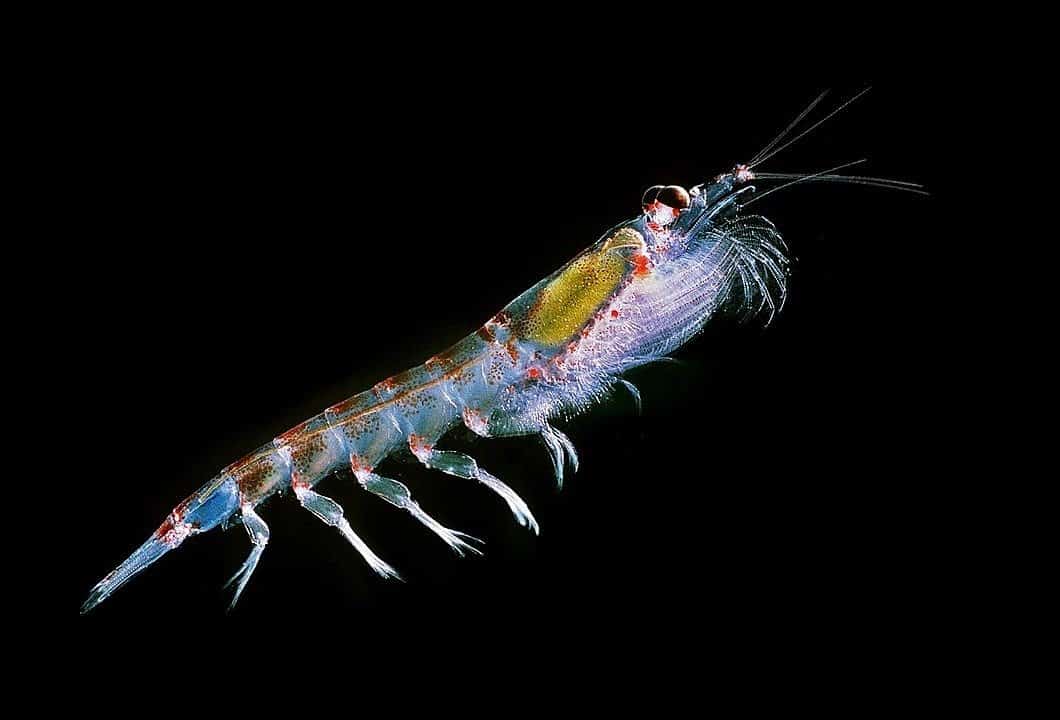
Krill are a foundational species in the food chain around Antarctica.
©Krill666.jpg: Uwe Kils / Creative Commons - License
Mars has water ice at its poles but the planet shows evidence of extensive ancient erosion, deltas, and other features from long-lost rivers and seas. Researchers believe the northern hemisphere was covered by an ocean that took up as much as a third of the planet’s surface. Future colonists are likely to thaw existing Martian water for their needs. Finding ways to release greenhouse gasses into the Martian atmosphere could help trap sunlight and warm the planet enough to melt the ice caps and refill at least part of this ancient sea. Or, if future resources and technology permit, icy comets or asteroids might be redirected with explosives into trajectories to collide with Mars and release their water.
On Earth, sea creatures that survive in the frigid Arctic and Antarctic Seas include unicellular algae, bacteria, diatom chains, crustaceans, and worms. Antarctic krill are crustaceans that are an essential part of the food chain for numerous species, including fish, seals, whales, and penguins. There are five species of krill and they are considered among the most successful creatures on Earth. This certainly puts them near the front of the line for a trip to Mars.
Opening Noah’s Ark
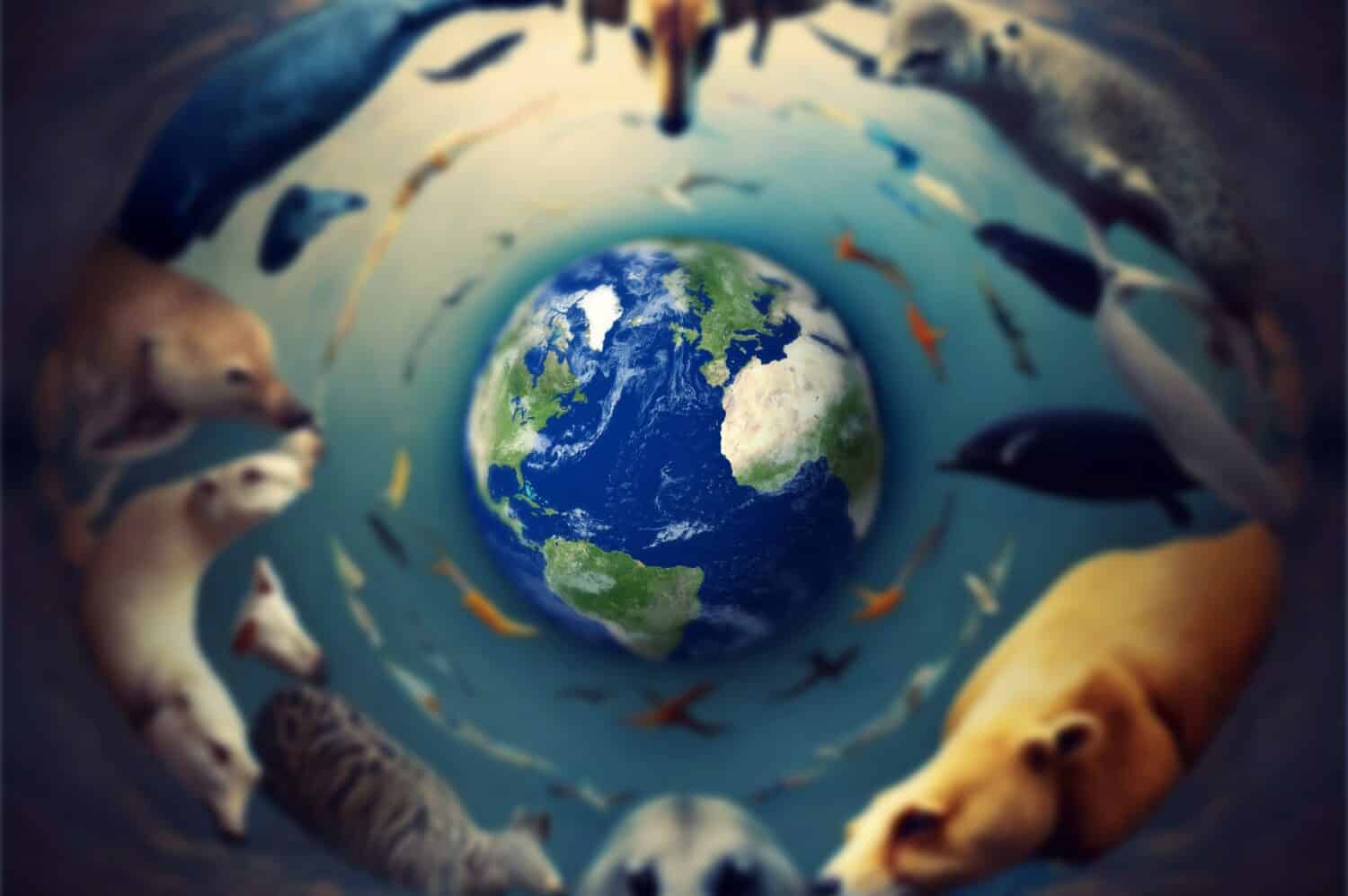
If we could move to a fully-terraformed planet, what plants and animals would we take with us?
©metamorworks/Shutterstock.com
Terraforming Mars seems nearly impossible from today’s perspective and that’s legitimate. We don’t have the expertise, technology, or resources to do it . . . yet. But the advances we may see in another century or two of AI-assisted technological leaps may bring the impossible into reach.
Colonists will probably use synthetic replacements for nearly every plant- or animal-based product we use on Earth today. But people will still have a desire to see and use some of the natural things previous generations had on Earth. Scarce natural products will be extraordinarily valuable luxuries if the future economy continues to operate based on principles of supply and demand.
Earth’s Most Useful Plants
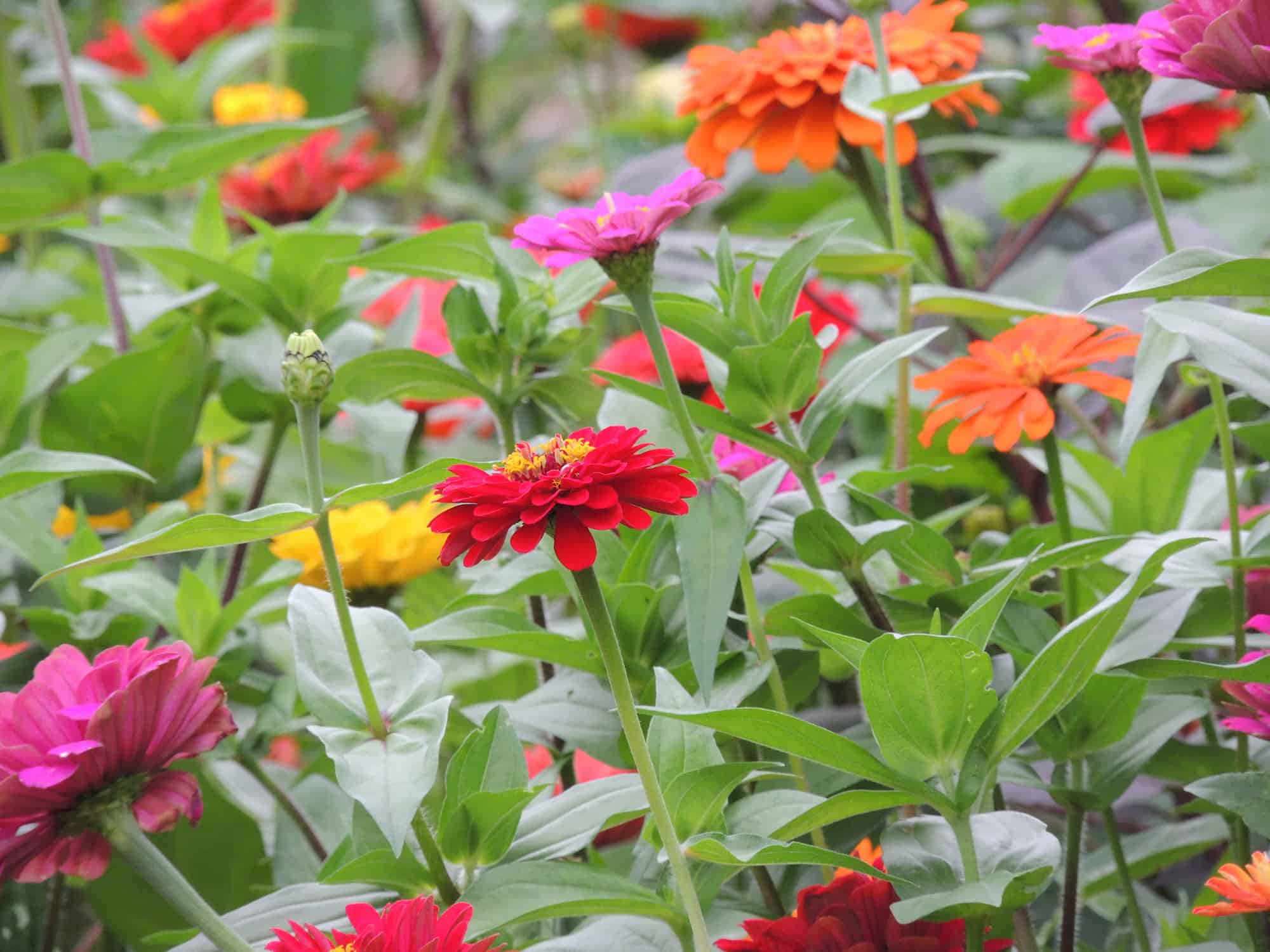
Plants like these zinnias may be chosen for Mars because of the aesthetic value they bring to colonists living in a desolate environment.
©Sara Koivisto/iStock via Getty Images
Here are some candidates for the most useful and beautiful plants to take with us to our future space home.
- Bamboo – It grows quickly, makes a good windscreen, has tender shoots that are edible for people and animals, and the poles make strong and beautiful wood sources for all sorts of practical and creative applications.
- Coffee – Some people think they can’t live without coffee. This will be one of the luxury products colonists may want to cultivate, and even export back to Earth. “Starbucks” could finally live up to its name!
- Red Maples – Early settlers in the American Plains bemoaned the lack of shade and made it a priority to plant trees. On Mars, deciduous trees with broad flat leaves will be well-suited for photosynthesis. Maple trees are fast-growing, provide deep shade, and are a hardwood species harvested for flooring and furniture and can be pulped for paper.
- Zinnias – NASA has conducted successful experiments to grow these flowers in space. They come in different sizes and a wide variety of colors, are hardy and tolerant of neglect, and are attractive to pollinators like bees and butterflies
Earth’s Most Useful Animals

Of course.
©Cavan-Images/Shutterstock.com
What advanced animals will Mars colonists most likely want to have in their new home?
- Alpacas – These smaller versions of llamas live in the high Andes. They have padded feet instead of hooves so they don’t tear up the plants and soil. They don’t drink much water or need much food. Their wool is hypoallergenic, soft, and in high demand for woven goods. And if you choose to eat the meat, it is highly nutritious.
- Cats and Dogs – It is not much of a leap of the imagination to assume that people will want to continue relationships with animals that have been domesticated to live in symbiosis with us since prehistoric times.
- Chickens – Chickens are useful for their eggs and meat. They’re relatively easy to raise and will be a food source not only for people but for any future carnivores released on the planet.
- Honeybees – We’ll need some pollinators for our flowers and crops, for sure. Honeybees can get the job done and create that sweet, sweet honey for us while they’re at it.
There’s No Place Like Home

A terraformed Mars will likely always at best be a limited reflection of our beautiful Earth.
©Alones/Shutterstock.com
Will we ever colonize Mars? The answer depends a lot on how well we manage Earth. If we don’t blow ourselves up and if we continue to research spacefaring technologies then there’s a chance sooner or later we’ll do it. But no doubt about it, Mars is a fixer-upper. That’s all the more motivation to take the best care we can of the one planet that’s already just right for us.
The photo featured at the top of this post is © AnastasiiaDo/Shutterstock.com
Thank you for reading! Have some feedback for us? Contact the AZ Animals editorial team.







